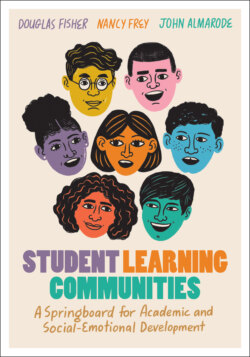Читать книгу Student Learning Communities - Нэнси Фрей - Страница 24
На сайте Литреса книга снята с продажи.
Ensure Tasks Are Challenging
ОглавлениеThe possibility of failure does not in and of itself ensure challenge. All of us make mistakes that involve simple tasks (e.g., forgetting to bring a file to a meeting, tripping on a curb, incorrectly calculating a tip on a restaurant bill). Nor is ensuring challenge simply a matter of making a task more difficult to complete. Difficulty is a measure of the amount of effort or time required. For example, doing 50 additional math problems beyond the standard assignment might present a high school student with a greater degree of difficulty (more time is required, and it's necessary to sustain focus for longer), but 50 more of the same kind of problem doesn't add complexity to a task. Complexity is a measure of the number of cognitive steps needed to complete a task, the amount of prerequisite knowledge required to complete it, and even the possible number of ways it might be solved (Webb, 1997). That same high school student is probably going to find a rich mathematical task that requires the use of statistics and pre-calculus to be complex for all of these reasons.
Generally speaking, an open task is going to be more challenging than a closed task, especially in the sense that it provides the group with opportunities for meaningful discourse. Closed tasks yield a single answer and offer little room for discussion, consensus building, or debate. Open tasks offer many possible entry points and solutions and allow for different perspectives to emerge. In Chapter 1, we shared a collaborative writing task on traditional Native American food sources; that is one example of an open task. Although the task was bounded, the possible outcomes could vary. Closed tasks might spark compliance and the shared goal of completing the assignment, but they offer little in the way of new learning. You may have witnessed the divide-and-conquer approach student groups adopt when the task offers little in the way of necessary interaction. Open tasks foster student learning communities; closed tasks inspire the divide-and-conquer approach.
